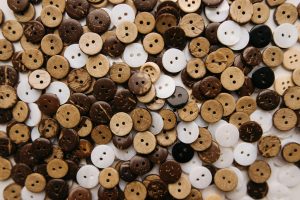Synthetic Intelligent Fabric Materials Revolutionizing Manufacturing Techniques
The advancements in technology have greatly impacted various industries, and the manufacturing sector is no exception. One of the recent innovations that have taken the manufacturing world by storm is the use of synthetic intelligent fabric materials. These materials have not only revolutionized the way products are manufactured but also opened up a whole new realm of possibilities for manufacturers. In this article, we will delve into the details of how synthetic intelligent fabric materials are transforming traditional manufacturing techniques and paving the way for a more efficient and sustainable future.
The Rise of Synthetic Intelligent Fabric Materials
Unlike traditional fabrics like cotton, silk, or wool, synthetic fabrics are human-made and created using chemical processes. These fabrics are known for their properties such as durability, stain and wrinkle resistance, and ease of maintenance. However, with the incorporation of intelligent features, these synthetic fabrics have become even more versatile and valuable.
Intelligent fabric materials refer to fabrics that are embedded with sensors, circuits, and other electronic components, either during the manufacturing process or through post-processing techniques. These components enable the fabric to sense, process, and respond to various stimuli, making them capable of performing various functions.
The Benefits of Synthetic Intelligent Fabric Materials
Synthetic intelligent fabric materials offer a wide array of benefits compared to traditional fabrics. Firstly, these fabrics are lightweight and flexible, making them ideal for use in wearable technology. They are also highly customizable, allowing manufacturers to tailor them to specific requirements.
Moreover, the incorporation of intelligent features makes these fabrics self-monitoring, self-healing, and energy-efficient. For instance, temperature and pressure sensors can detect changes in the environment or the body and automatically adjust to provide thermal comfort or relieve pressure points. This not only enhances the user experience but also prolongs the life of the fabric.
The Impact on Manufacturing Techniques
The use of synthetic intelligent fabric materials has greatly impacted manufacturing techniques, primarily in the fields of fashion, sports, and healthcare. In the fashion industry, designers can now incorporate lighting and interactive elements into their clothing designs, creating a more immersive and futuristic experience for the consumer. Sports brands have also started using these fabrics in their athletic wear, which can not only track performance but also enhance it by providing necessary support and feedback.
In the healthcare sector, these fabrics are becoming increasingly popular in the production of wearable medical devices. These devices can monitor vital signs, deliver medication, and even aid in the rehabilitation process, making them a game-changer in the field of healthcare.
The Future of Manufacturing
Synthetic intelligent fabric materials have opened up a whole new world of possibilities for manufacturers. As technology continues to advance, we can expect to see even more innovative uses for these fabrics. For instance, researchers are exploring the potential of self-cleaning fabrics, which can eliminate the need for frequent washing and thus save water and energy resources.
Furthermore, with the increasing focus on sustainability and eco-friendliness, it is predicted that more and more manufacturers will shift towards using these fabrics in their production processes. As synthetic intelligent fabric materials are reusable and recyclable, they can significantly reduce the amount of waste generated by the fashion and textile industries.
Final Thoughts
There is no denying the fact that synthetic intelligent fabric materials are revolutionizing traditional manufacturing techniques and shaping the future of the industry. With their numerous benefits, versatility, and potential for innovation, it is safe to say that these fabrics are here to stay. It is up to manufacturers to embrace this technological advancement and leverage its full potential to stay ahead in the ever-evolving world of manufacturing.











